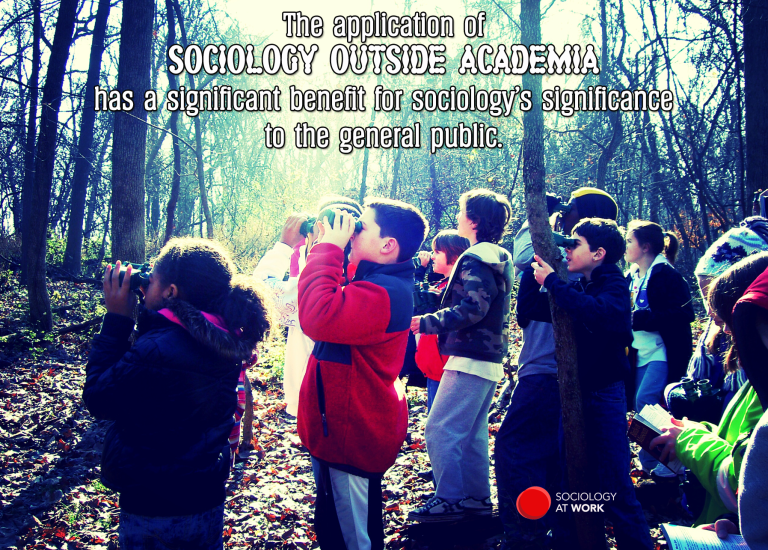 For a couple of decades I have been an “applied sociologist,” meaning that my sociology leaves the classroom and situates itself in organizational contexts. There are many ways that applied sociologists “do sociology.” For the most part my work focuses on evaluating a range of programs and policies to help organizations get stronger and ultimately, bring in more funds so they can continue to do their work.
For a couple of decades I have been an “applied sociologist,” meaning that my sociology leaves the classroom and situates itself in organizational contexts. There are many ways that applied sociologists “do sociology.” For the most part my work focuses on evaluating a range of programs and policies to help organizations get stronger and ultimately, bring in more funds so they can continue to do their work.
Applied sociology may be perceived by some as the step child of academic sociology. “Professor” is a far classier title than Senior Research Associate or even, Wowza Evaluation Research Expert! But academic and applied sociology are equally good options; the choice to pursue one or the other has more to do with the job market and one’s career goals and interests. That said, applied sociologists have fewer institutionalized steps along the career ladder to achieve “success,” and we experience less institutionalized scrutiny. For better or worse, applied sociologists also don’t generally have a “family” of colleagues for life!
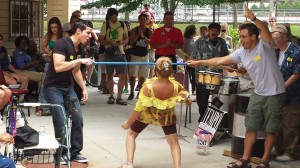
A lot of us “applied folks” are happy with our choice. The work is challenging, and the potential to improve programs and policies that improve people’s health, education, incomes, and more is satisfying. Many of us also love to teach, but generally when we do, we’re on the lowest rung of the totem pole as adjuncts, with low wages, no benefits and, depending on the institution, no status, even if one is a stellar teacher whose students adore you. But unlike adjuncts who are scraping a living together teaching multiple single courses, we may choose to teach a course, without fully depending on this income.
Sociology in Action
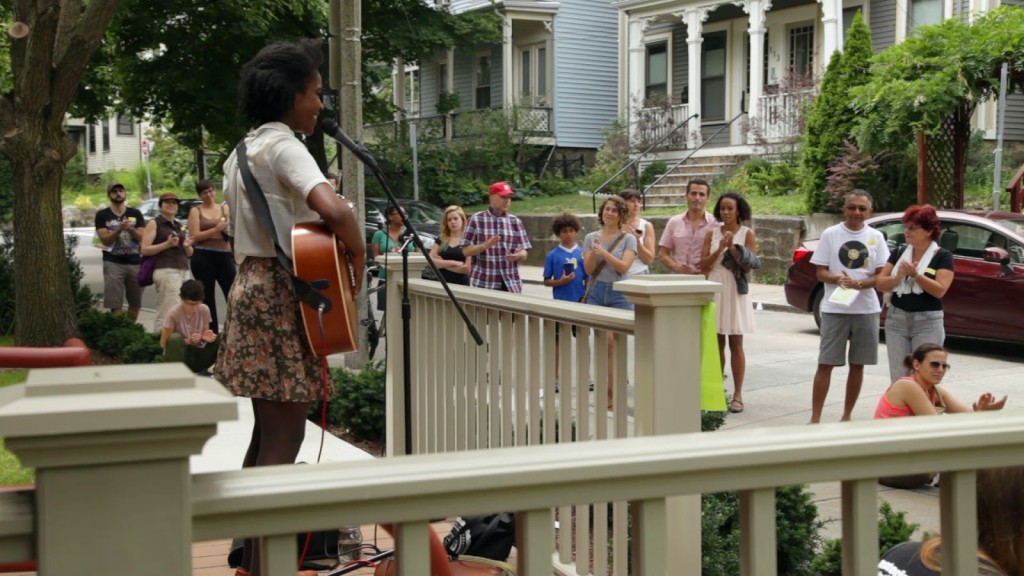
This spring, I discovered another way to put my sociology into action, when I joined with a friend to organize a neighborhood music festival on porches called “Jamaica Plain Porchfest.”
My type of applied sociology had, for the most part, been stuck in a room, or on occasion, at an event or rally. But I felt ready to break out. While I have been evaluating arts-based programs for a number of years, I found that I could bring my sociological eye to designing and implementing a participatory arts-based musical event. Luckily I was partnered with a dear friend who brought the same sensibility and perspective.
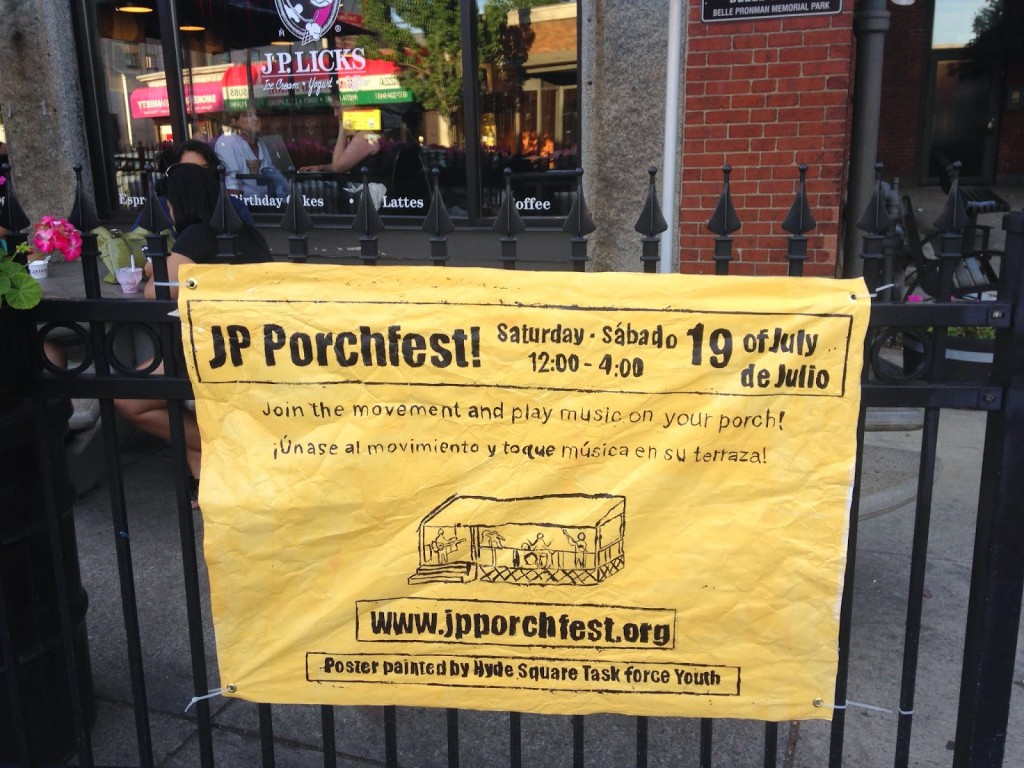
Our sociological eyes went into motion from the beginning, as we identified the “outcomes” we wanted to achieve. We live in a community that is considered very diverse in terms of race/ethnicity, class, and sexual/gender orientation. But in reality, the community is very divided. There is a “Latin Quarter” which houses Cubans, Dominicans, Puerto Ricans and Central Americans; there are public housing developments that cloister poor people in large high rises; there are new mixed-income housing developments; there are sections of “town” that are entirely working class, and others that are entirely middle class. Our goal was to bring the various strains of the community together – bridging race/ethnicity and class – using music as the vehicle.
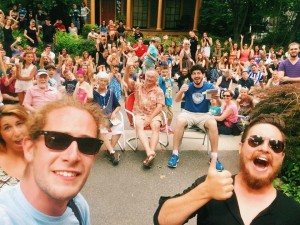
The phenomenon of “porchfests” is not new. The first one was organized in Ithaca, New York in 2007, and now there are 20 of them in cities and towns throughout the U.S., including Tucson, Napa Valley, Boulder, Buffalo (my home town!), Salt Lake City and in Somerville, Massachusetts, the porchfest that initially inspired us. From the looks of the incredible photos on each of their porchfest websites, we can see that they are joyous events that build community. From our conversations with the Ithaca and Somerville porchfesters, we also know how successful they are in promoting community bonding, as people come out on the streets to enjoy music together.
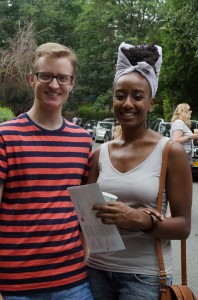
In contrast to some of the neighborhoods where other porchfests take place, around half of Jamaica Plain’s residents are people of color, including 25 percent Latino, 14 percent African-American, 4 percent Asian, and 50 percent white. Our commitment was to promote bridging and bonding, by pursuing three strategies: include a diverse range of musicians in terms of their racial/ethnic backgrounds as well as musical genres; locate and include porches throughout the neighborhood where musicians can play; and engage and bring out diverse audiences. We hoped that these strategies would help to overcome some of the “tri-furcation” or “quadri-furcation” in the ‘hood.
Initially, we created a Facebook page with a call for musicians and porch hosts. But a lot of people don’t go on Facebook, including 27 percent of online adults who don’t use social media, and another group of people defined as Facebook “resisters.”
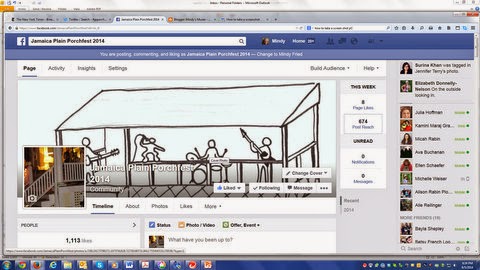
So we reached out to local non-profit organizations, some of whom serve youth, others who manage low-income housing, others who coordinate small business activity, and yet others who run programs around maintaining a beautiful, large park in one of the neighborhood’s low-income neighborhoods. We also reached out to students at a highly renowned local music college. We even “scouted” musicians, sometimes at a local park or other venue, as well as musicians we heard of through friends.
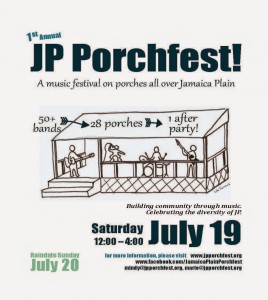
My organizing partner and I started with the idea that we’d do a “pilot” event with three bands and three porches. But if were to stay true to our goals, we needed to do more than that. Ultimately, we had 60 bands sign up and enough porches committed so that two bands could play on each porch. We spent hours poring over the mix of bands and porch hosts we would match, focusing on bringing together a mix of people from diverse backgrounds by race/ethnicity, gender, and where possible, class. In the end, diverse bands and solo musicians shared a stage – a.k.a. porch – hosted by a third party who generously offered her/his porch.
We had been informed that one of the other porchfests almost got shut down one year because there were crowds of people roaming the streets, obstructing traffic and trashing neighbor’s lawns. So we created a tiered structure, in which each porch had a “Porch Fun Manager,” each cluster of porches in a particular part of the neighborhood had a “Cluster Manager,” and the overall event had two “Network Managers” (me and my partner), who kept an eye on the whole thing. Organizational sociology in action…
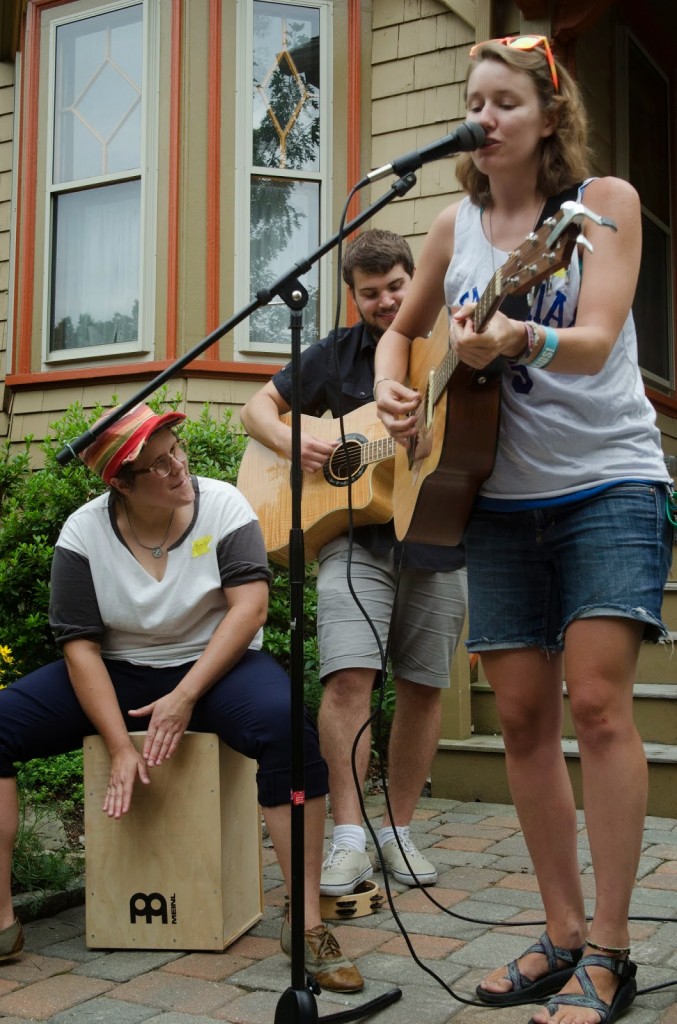
While the two of us organized this event, we realized we were operating within the construct of social institutions that needed to be privy to our plans, offer advice, and inform us of limitations. We met with officials from the City and the police, and from a neighborhood services department that does city permitting. (We were committed to NOT having permits for each porch! We didn’t have the budget, and we didn’t want to deal with the bureaucracy.)
And did I mention that we had NO budget whatsoever? This was one of the appeals of the event. Nothing commercial. No “brought to you by” banners, logos or even food trucks! We received a few in-kind donations: one from a friend, another from the City of Boston which paid for printing colorful maps of the porch routes to be used on the day of the event, and another from a printer who didn’t charge us for printing postcards to announce the event. For many people, the fact that JP Porchfest was commercial-free was a breath of fresh air.
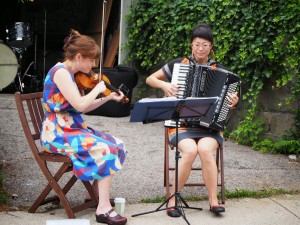
So how did it go?
On the day of the event, we had 7,000-8,000 people roaming throughout the neighborhood listening to music and hundreds show up at a local restaurant, Bella Luna Restaurant, and Milky Way Café for an after-party that served $5 all-you-can-eat pizza!
Anecdotally, it seemed that everyone loved the event from the audience to the musicians to the porch hosts. But a good “action sociologist” can’t just leave it there! We needed to evaluate the impact of the event.
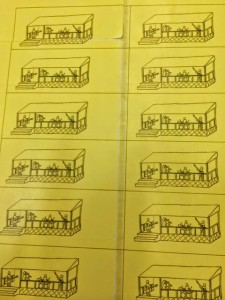
To count the numbers in attendance we used porchfest stickers. We had intended to count the leftovers to gauge the size of the crowd, except we ran out of stickers in one hour! We consulted an audience researcher on how to calculate the final numbers and it’s her figures – 7,000-8,000 – we are citing.
We also distributed very short surveys with a few questions that would help us learn what worked and what didn’t as well as to identify the demographics of the porchfesters. Nearly 100 percent reported that the event was “excellent” or “very good” (we’re still working on analyzing this data). In addition, we had two sociology graduate students from Brandeis University (my alma mater) traversing the event and interviewing participants about their experience.
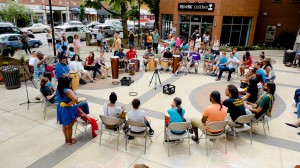
And we queried musicians and porch hosts to provide more detailed feedback on their experiences performing at JP Porchfest and learned that they made great connections with the band with whom they shared their porch, and with their porch hosts. They were pleased that they were able to add people to their mailing lists and increase their CD sales.
We heard that small businesses had also increased sales. One of our colleagues and friends from a local nonprofit conducted her own short survey to see if business picked up in the “Latin Quarter” and interestingly, small shops like the local beauty shop and local rotisserie chicken take-out place increased their business by anywhere from 100 to 400 percent!
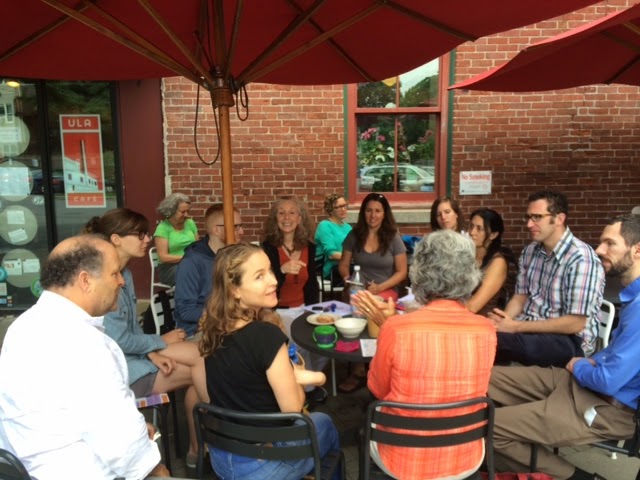
Finally, we wanted to document the event. We put together a team of professional filmmakers who shot the event and will produce two videos. One is a documentary about JP Porchfest that centers on three narratives: a long-time Latina political activist who had just moved into affordable housing and wanted to use porchfest as a way to unite her racially divided neighborhood; a veteran rock musician who writes songs about JP, and is a staple in the ‘hood; and a group of youth leaders from a local non-profit organization who were accompanied by two filmmakers who documented their response to the event and the different types of music. The other is a 5-minute “how-to” video, which will be accompanied by a training guide that we write, in order to help other communities produce their own porchfests!
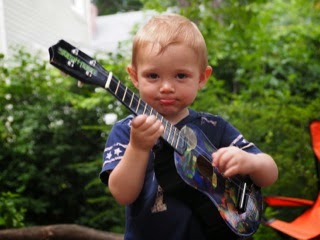
Reflecting Back, Looking Forward
My organizing partner and I were initially worried that no one would show up, and then after the event, we worried that we would experience a post-event malaise. But we have been disproven twice!
We are now planning JP Porchfest 2015, this time knowing a lot more than we knew before we started. Soon we’re going to launch a Kickstarter campaign, and Bella Luna/Milky Way has offered us their venue for two fundraisers.
In the end, we determined that we had done a pretty good job, maybe even a really good job! While roughly one-third of our musicians were people of color, we want to increase the diversity of the audience, and we are developing a strategy to do so.
In a follow-up conversation I had with Ayanna Pressley, a brilliant African-American City Councilor who spoke at the event, I lamented that the audience wasn’t as diverse as we wanted it to be, and she told me, “you are acting like a woman!” I was startled. What did she mean? She told me that the event was a great success, but I was focusing on the negative. “We’ll work on that for next year,”she reassured me.
Watch this video of Rick Berlin and the Nickel and Dime Band: “I Love My Street.”
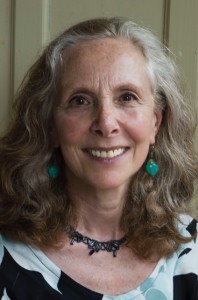 Mindy Fried, M.S.W., Ph.D. is a sociologist with 30 years of experience conducting research, teaching, and conducting policy analysis on work and organizational issues. She is Co-Founder and Principal of Arbor Consulting Partners. Through Arbor and in her independent consulting, Mindy has worked with a wide range of diverse organizations, both on evaluation design and implementation, as well as in providing technical assistance on research design and organizational issues. Mindy has been teaching a Women’s Studies class at the Massachusetts Institute of Technology called Gender, Power, Leadership and the Workplace, and will soon be teaching evaluation research to Sociology graduate students at Boston College. Over the past four years, she has been writing “Mindy’s Muses.” Mindy received her Masters and Doctorate degrees in Sociology from Brandeis University, and a Masters in Social Work from Syracuse University, with a focus on Community Organizing and Social Policy Planning.
Mindy Fried, M.S.W., Ph.D. is a sociologist with 30 years of experience conducting research, teaching, and conducting policy analysis on work and organizational issues. She is Co-Founder and Principal of Arbor Consulting Partners. Through Arbor and in her independent consulting, Mindy has worked with a wide range of diverse organizations, both on evaluation design and implementation, as well as in providing technical assistance on research design and organizational issues. Mindy has been teaching a Women’s Studies class at the Massachusetts Institute of Technology called Gender, Power, Leadership and the Workplace, and will soon be teaching evaluation research to Sociology graduate students at Boston College. Over the past four years, she has been writing “Mindy’s Muses.” Mindy received her Masters and Doctorate degrees in Sociology from Brandeis University, and a Masters in Social Work from Syracuse University, with a focus on Community Organizing and Social Policy Planning.
